Writing prompts in Midjourney may appear easy, but it takes a lot of hard work and dedication to do it consistently. Is it easier than making art yourself? No doubt. But you shouldn't think you'll be able to create high-quality images in Midjourney without putting in a lot of effort.
After you start experimenting with this AI model, you will hit a wall sooner or later. It will become difficult for you to come up with new prompts because you've already written so many of them.
The first time I hit a wall, I decided that it was important for me to create a framework I can follow when I want to write prompts in Midjourney.
Today, I'm going to share the framework with you. It essentially consists of several steps that I take whenever I'm writing prompts. It's super easy to follow, so you'll be able to try it out even if you have no prior prompting experience.
How to Write Good Midjourney Prompts Every Time?
One of the most important reasons why you should have a framework is so that you can ensure you write good Midjourney prompts every time you log into your Discord account.
To have good consistent results when prompting in Midjourney, you should follow several simple steps each time you start writing.
Before I get into the details of my framework, I want to mention one thing. I'm by no means saying that my framework is perfect. It's okay to disagree with some parts of it. It just works for me.
I advise you to change the framework however you see fit or come up with new steps in the process. Either way, you should ideally create a system that works best for you. Until you do that, I suggest you follow the steps that I'll lay out now.
Start With a Basic Idea
When you want to write a prompt in Midjourney, you should always start with a basic idea. I can't stress how important it is to keep it simple at first.
My #1 rule for prompting - don't overthink it.
Spending too much time trying to write a perfect prompt on your first try likely isn't going to help you produce good results. More importantly, it's not going to help you unleash your creativity.
You should start with a very basic idea and then build on it. I'm going to show you an example. I'll just write the first thing that comes to my mind.
Lollipop.
That's the first word that I thought of. Now, I can just write the word lollipop in Midjourney and it will produce some great results (see below). But I want to provide more input and find ways to make the image stand out.
This is what gets generated when I type “/imagine lollipop” into Midjourney.
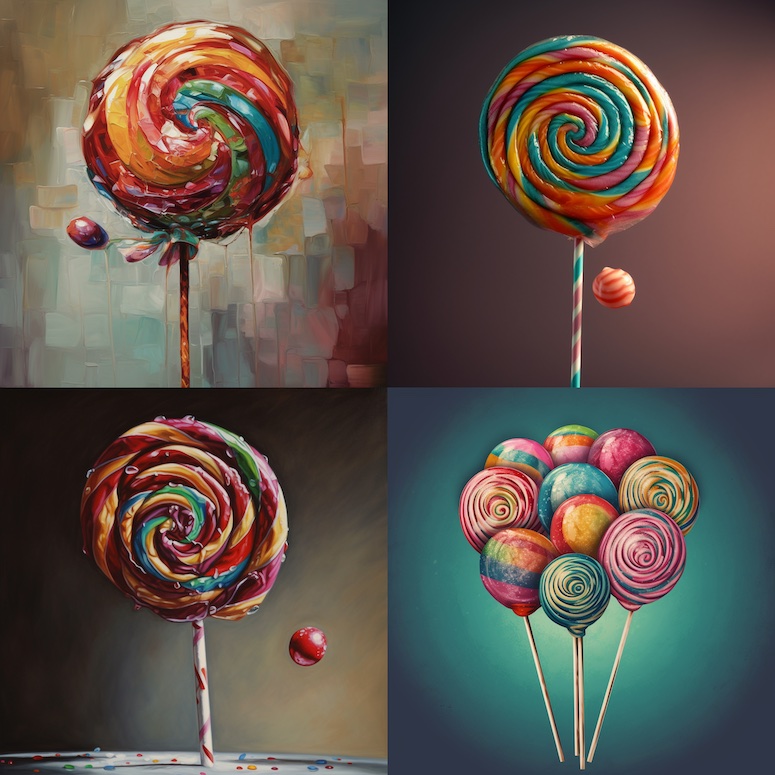
Starting with a basic idea is how you keep things simple in the prompting process. Although I wrote down only one word, your basic idea can be a whole sentence. It can be something like "man wandering through a desert."
Anything that you come up with that doesn't include modifiers, special keywords, adjectives, or any other words that would have a significant impact on the images should serve as the foundation of your prompts.
Once you write down your basic concept, it's time to start building on it.
Improve the Idea With Keywords
After you come up with an idea for a prompt, the next thing you want to ask yourself is how you would describe it to another person. Try to describe it in as much detail as you can, even if that doesn't instantly produce a good prompt.
If I were to describe how I imagine a lollipop, I would say that the colorful swirls that make it up are a visual masterpiece that triggers so much nostalgia that I can almost taste the fruity treat.
When I imagine a lollipop, I see vibrant colors that range from a yellow that resembles a lemon to a note of purple that represents blueberries, my favorite fruit. The spiral shape of a lollipop has made it appealing to me ever since I was a kid.
I could go on and on, but I just wanted to show you how you can let your thoughts wander on basically any concept. I'll also mention the second example I gave you in this article about a man wandering through the desert. Here, I would advise that you create a story for the scene.
Maybe it's an isolated old man dressed in a white robe that wanders through the desert only to discover that civilization developed an incredible level of technology he could've never imagined.
Whenever you explore a concept, you will find ways to enhance your prompt. When I took the time to picture a lollipop, I immediately thought of the colorful swirls. This is a great thing to mention in a prompt.
If I add a few keywords to the initial idea, I'll be one step closer to writing a good prompt. Here are some additions I can make right now:
/imagine spiral shaped lollipop with colorful swirls ranging from yellow to purple, each color showcasing fruity aroma and taste, vibrant colors

There is probably a good reason to trim the prompt and make it more concise, but I'll just leave it like this for now. Let's move on to the next step in my framework.
Choose an Aspect Ratio
The next thing you should do is determine the aspect ratio. People often use the default aspect ratio instead of choosing one that might make the generated images look better.
To choose an aspect ratio in Midjourney all you have to do is write "--ar x:y" at the end of your prompt, with x being the width and y being the height. In other words, if you wanted to choose a 16:9 aspect ratio, you write --ar 16:9 at the end of your prompt.
You should choose between a portrait and a landscape aspect ratio based on the images you want to generate. For my lollipop example, I imagine the image as something I would see if I were scrolling through Pinterest. In this case, I would use a 2:3 aspect ratio.
With this in mind, the current version of my prompt goes like this:
/imagine spiral shaped lollipop with colorful swirls ranging from yellow to purple, each color showcasing fruity aroma and taste, vibrant colors --ar 2:3
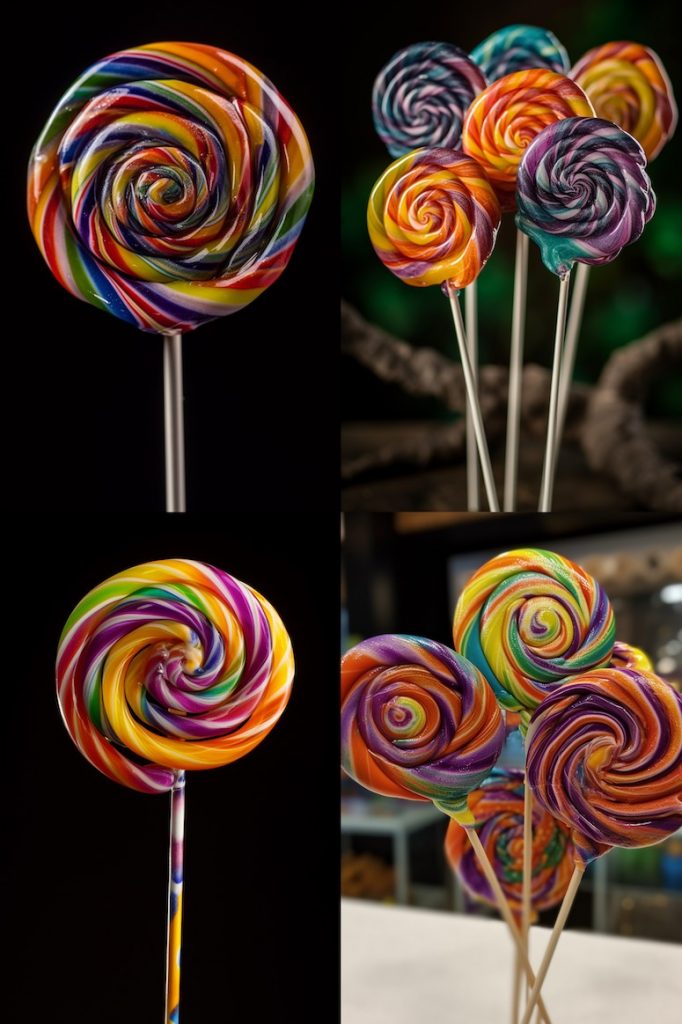
Now, it's time for the next step in my framework - using modifiers.
Use Modifiers
Modifiers are extremely powerful additions that you can use to improve the images you want to be generated in Midjourney. They essentially represent phrases or special words that will give the AI model information on the way you want your images to look.
For instance, you can use a modifier like "insanely detailed" if you want to put a focus on the details in your image. You can also use modifiers like "photorealistic" or "8K" to provide Midjourney with clear instructions on how you want the image to be generated.
One of the modifiers that I think is essential to use in my prompt here is "stock photo" because I want a clean image that looks like a photograph. Here is what my prompt looks like when I add some useful modifiers.
/imagine stock photo of a spiral shaped lollipop with colorful swirls ranging from yellow to purple, each color showcasing fruity aroma and taste, stock photography, insanely detailed, 8K, vibrant colors --ar 2:3
And here is the result of that prompt.
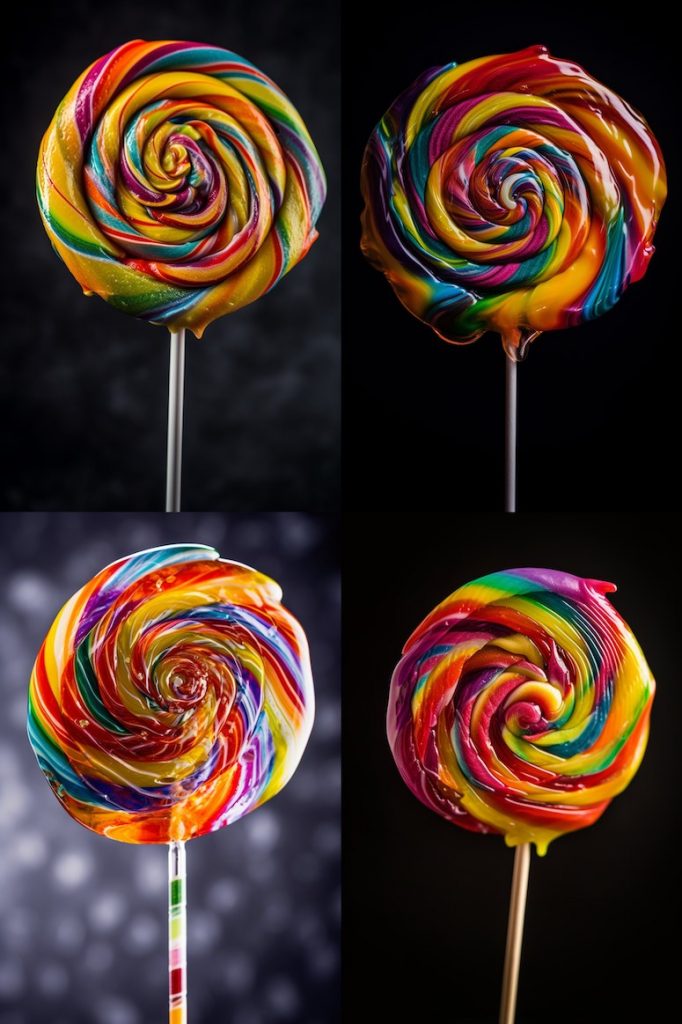
Now that I've included modifiers in my prompt, I want to make sure that I can include any other details or change certain words.
Add/Change Details
After you take the initial few steps towards creating a high-quality prompt, you should either add or change certain details to make a better image. This is the part of the process where you have to let your creativity flow.
The great thing about this step is that you've already seen the images evolve with your prompt. This gives you the opportunity to determine whether the images can be better with a simple change. I personally think I could've mentioned other colors in my prompt to make the images look better.
The inclusion of colors like yellow and purple aren't as great as I thought they'd be. Let's see what the lollipops would look like if I change the colors.
/imagine stock photo of a spiral shaped rainbow colored lollipop with beautiful swirls, each color showcasing fruity aroma and taste, stock photography, insanely detailed, 8K, vibrant colors --ar 2:3
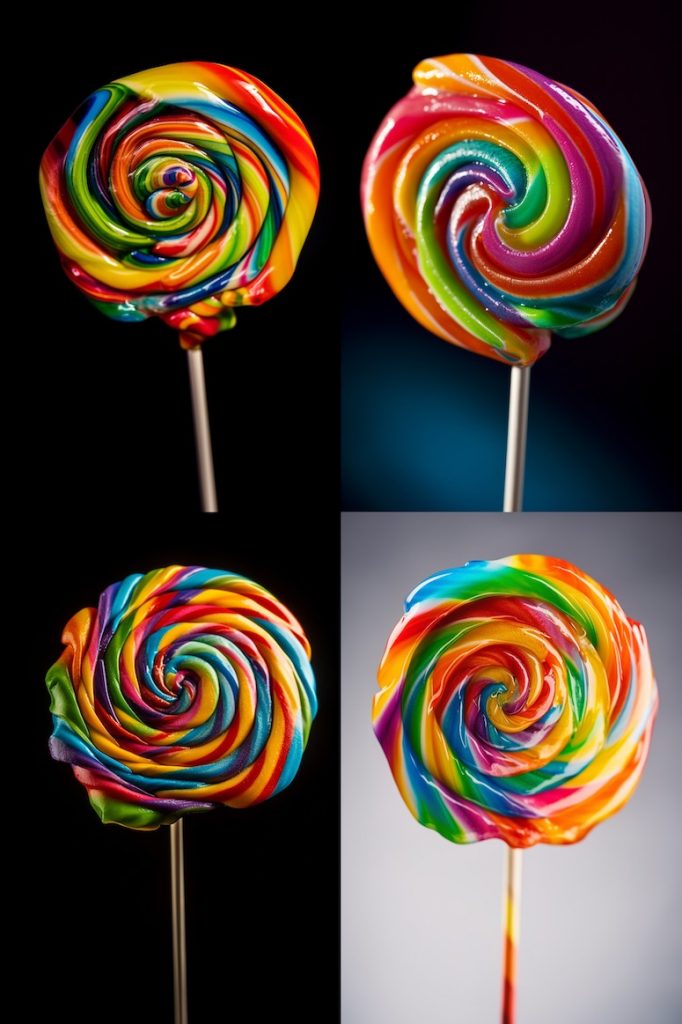
Now, these lollipops look much more appealing. But, I can also mention other specific colors, like this:
/imagine stock photo of a spiral shaped lollipop with beautiful white, green, blue, and red swirls, each color showcasing fruity aroma and taste, stock photography, insanely detailed, 8K, vibrant colors --ar 2:3
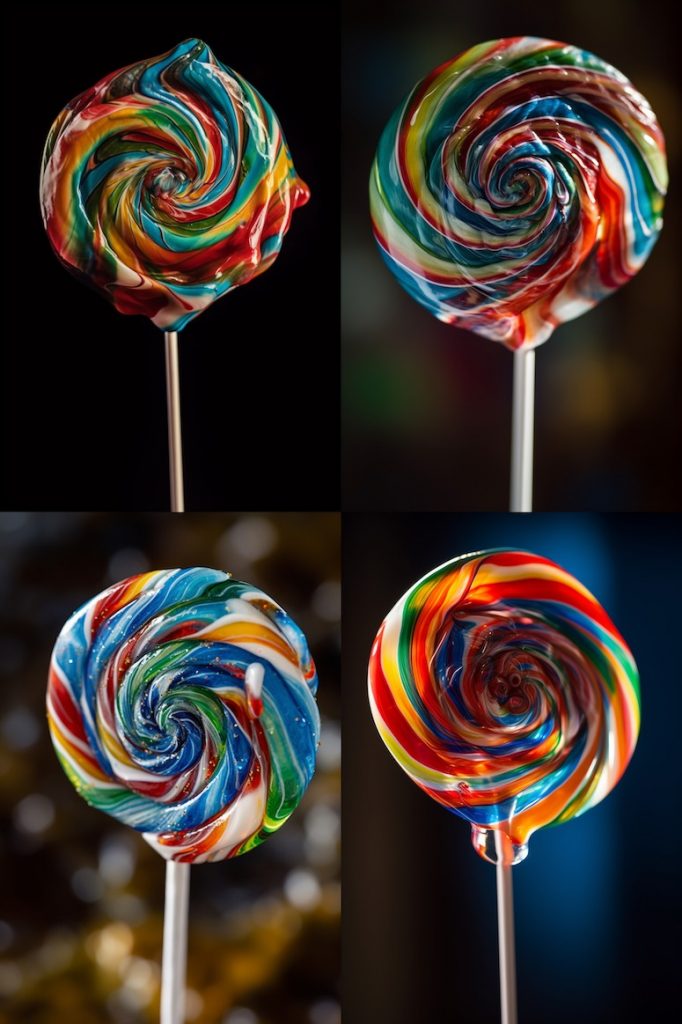
These also look cool, but I think most people would agree with me when I say that rainbow colored lollipops are better. I can also try to include other details in the prompt, such as:
/imagine stock photo of person holding a spiral shaped rainbow colored lollipop with beautiful swirls, each color showcasing fruity aroma and taste, stock photography, insanely detailed, 8K, vibrant colors --ar 2:3
Midjourney usually isn't too good when it comes to generating images that include hands, but its skills in doing so have improved significantly ever since the launch of Midjourney v5. I was skeptical if a prompt like the one above would work, but it did. Check the results.
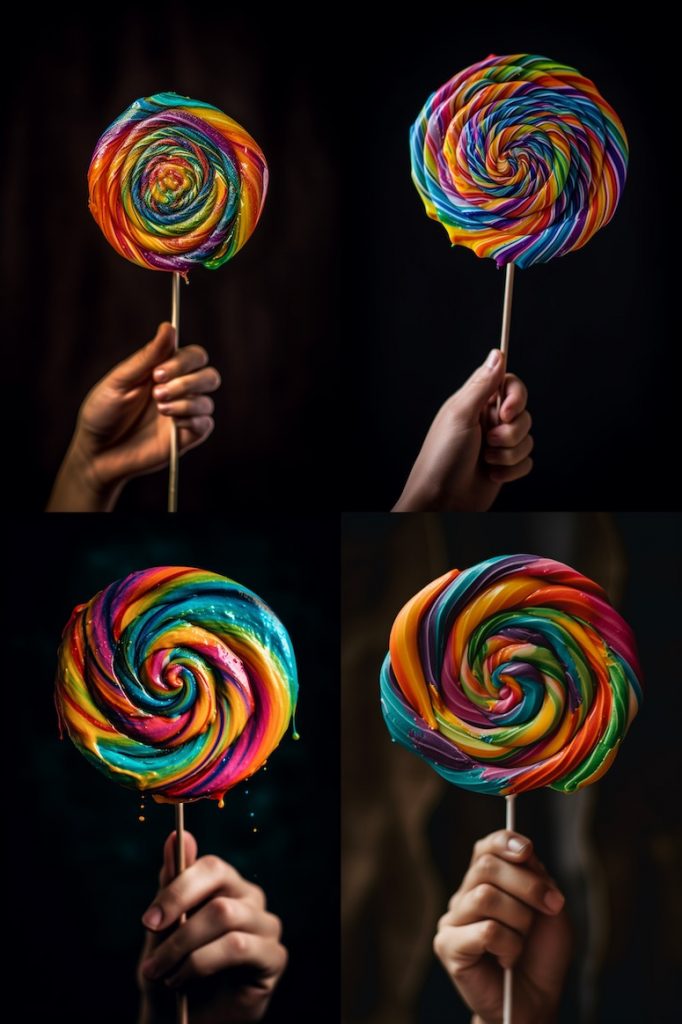
The second image is particularly good, and it's starting to feel like this prompt is almost close to being great. But... maybe we can also try something else. As I was writing this part of the article, I thought about my own fascination with lollipops.
Seeing beautiful swirls on lollipops reminds me of going to the fair as a child. I think it's a memory that a lot of people all over the world share. So, it made sense to try and recreate a scene like that with Midjourney.
/imagine photorealistic image of a happy child at a fair holding a spiral shaped rainbow colored lollipop with beautiful swirls, each color showcasing fruity aroma and taste, stock photography, insanely detailed, 8K, vibrant colors --ar 2:3
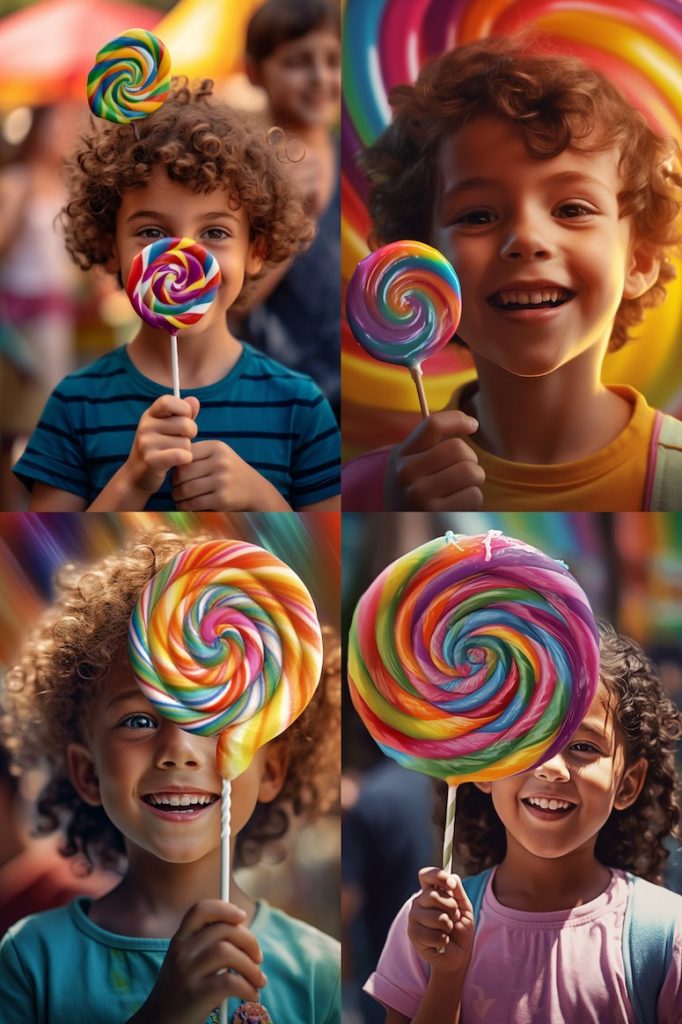
These images are a bit confusing to say the least. The backgrounds are strange. And I think I know why this problem occurred. I think I can make it go away by trimming the prompt.
Trim the Prompt
It's crucial to be mindful of the instructions you provide Midjourney. What caused the four images above to look strange is the fact that there was some text in the prompt that ideally shouldn't have been there.
I went too far with describing the colors that comprise the lollipop. Errors like this are bound to happen and are exactly the reason why the final step in my framework is to trim the prompt. I'll now make it concise, but make sure that the prompt includes all the necessary details.
/imagine photorealistic image of a happy child at a fair, holding a spiral shaped rainbow colored lollipop with beautiful swirls, people in the background, stock photography, detailed, 8K --ar 2:3 --v 5

These images look quite real, especially the first. What I don't like though is that when you pay attention to the hands, you'll see they're not positioned well and they have a weird grip on the lollipop.
Thankfully, I can instruct Midjourney to make variations on that image and then upscale it. In the end, here is what the result looks like.
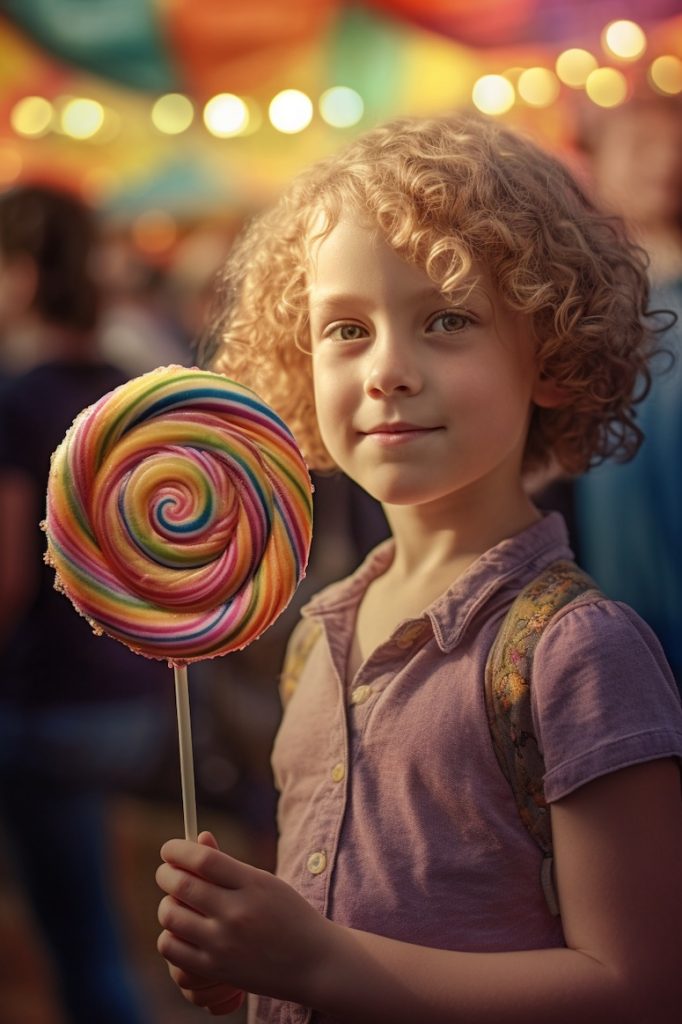
It's amazing that we started this whole journey with only one word - lollipop. After going through my framework step by step, I was able to have this incredible image generated. I hope that you also find my advice helpful and use it to create beautiful AI-generated art.
Final Thoughts
My framework for writing Midjourney prompts consists of several key steps. These are the steps I take when I want to write a quality prompt. Of course, there are also instances in which I just experiment with random ideas to see what the AI model will generate.
If you want to write a high-quality prompt in Midjourney, here are the steps you should take:
- Start with a basic idea
- Improve the idea with keywords
- Choose an aspect ratio
- Include modifiers in the prompt
- Add/change details
- Trim the prompt
The keywords you use in your prompts should either highlight certain details you want to see in the image or specify an art style.
Don't forget to think about whether you should add or change certain details in your prompt, even when it seems like it's perfect. The only way to find out whether an image can be better is by trying new things. It's also important to trim the prompt at the end so that it's concise.